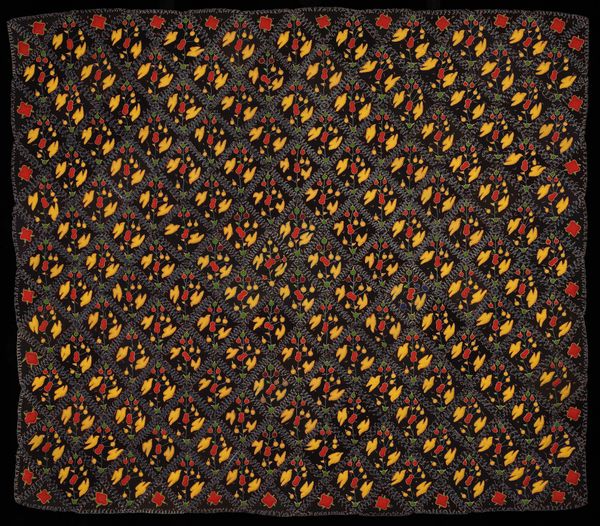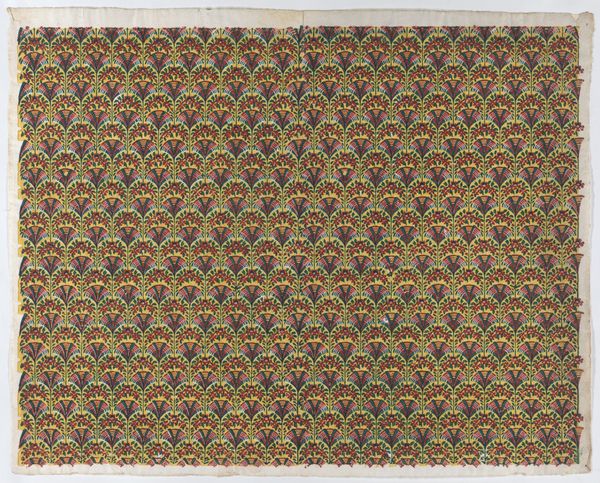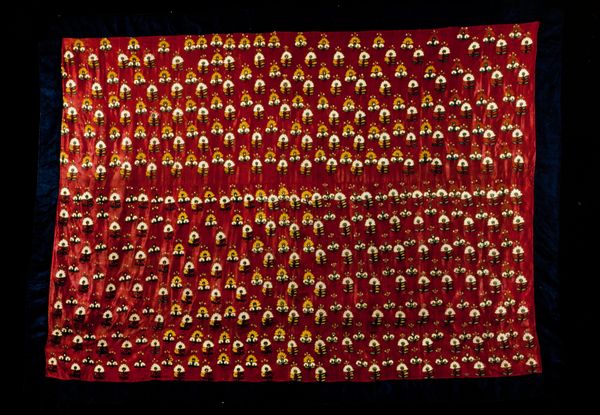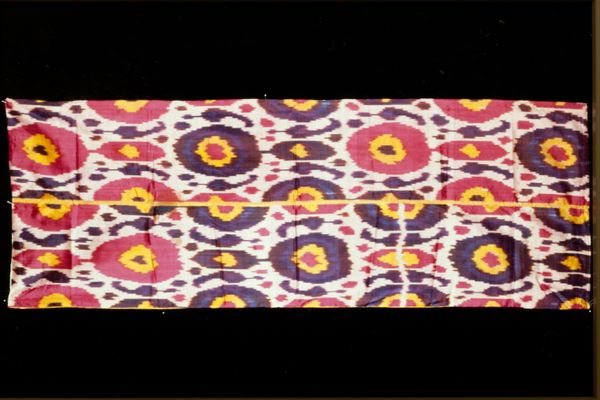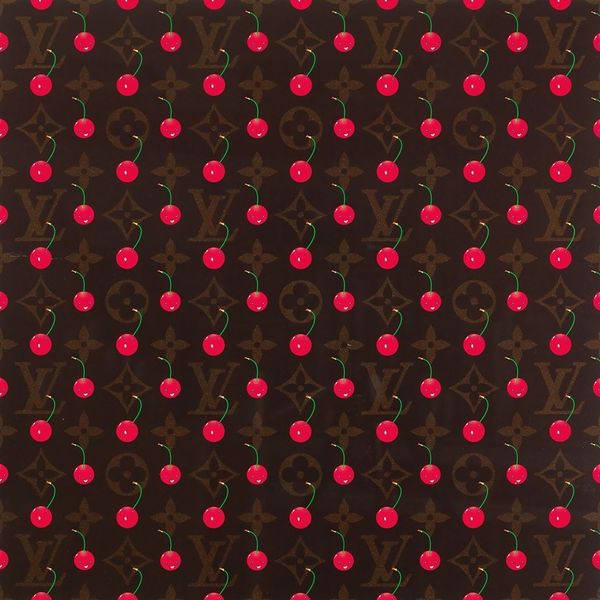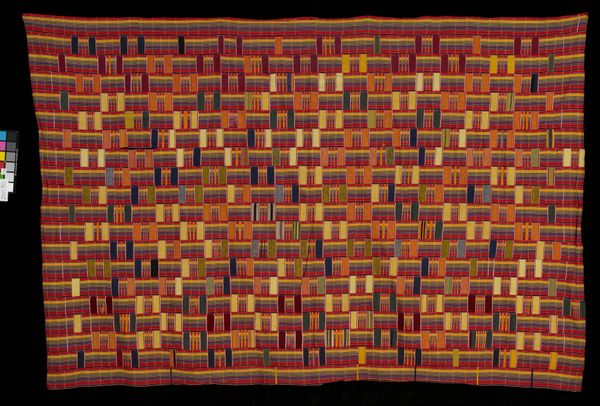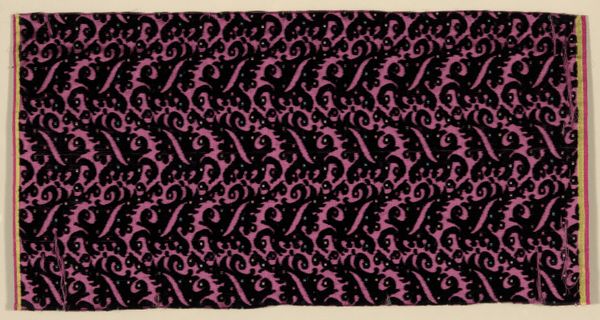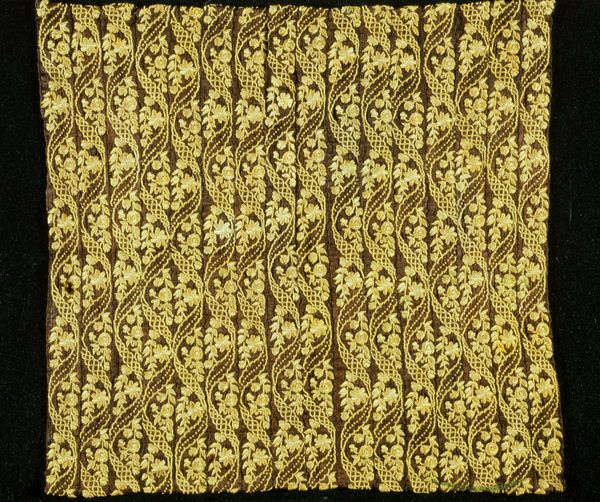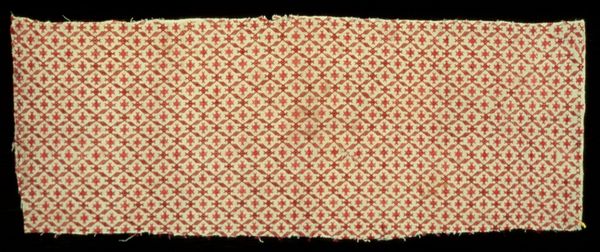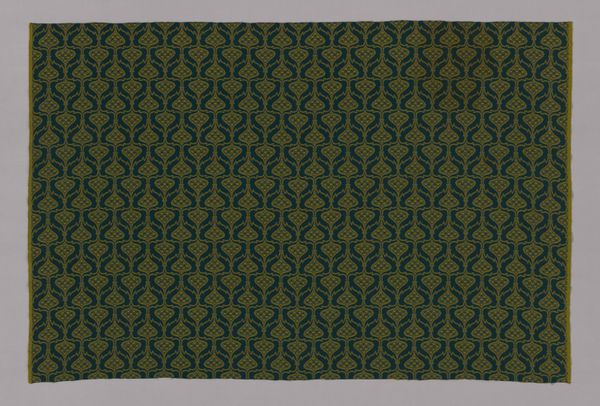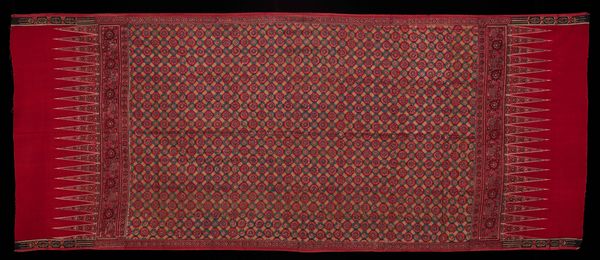
weaving, textile, cotton
#
organic
#
asian-art
#
weaving
#
textile
#
organic pattern
#
cotton
Dimensions: 57 3/4 x 11 7/8 in. (146.69 x 30.18 cm)
Copyright: Public Domain
Curator: Wow, what a gentle yet pervasive rhythm to this fragment. Editor: Indeed. This piece, identified as a Turban Fragment, dates back to the 18th century. It's woven from cotton and resides here at the Minneapolis Institute of Art as part of their Asian Art collection. It is quite remarkable in how its seemingly simple motifs echo so powerfully throughout the piece. Curator: Rhythm is the word! Each little motif feels like a breath, and the whole piece exhales calm. It reminds me a bit of quiet contemplation, of finding a pattern within chaos, perhaps of spiritual devotion. You know? The way it’s fragment suggests a larger, maybe more complex whole. What can you share about the culture surrounding turbans during that period? Editor: Absolutely, so during the 18th century, turbans across many parts of Asia weren’t just head coverings; they were incredibly symbolic social markers. The style, material, and even the way they were tied could indicate someone's status, profession, or religious affiliation. Fragments like this allow us to look at not just artistic trends, but also the lived experience, politics, even personal expressions through textiles. Curator: It is amazing that this very practical function has birthed such delicate art. I am looking at these tiny botanical forms closely—they’re so understated! Not flashy, very humble. Like the cloth whispers secrets when what one expects is a shout. Do you find the color palette muted too, or is it simply time taking its toll on what once was vivid pigment? Editor: Time certainly plays a part. However, the color palette would likely still lean toward earthy, organic tones. This intentional choice aligns the wearer with nature and suggests humility rather than opulence, regardless of social standing. We could consider too, the possibility that vegetal dyes, used predominantly at this time, create a certain kind of aesthetic limitation—I use the term loosely—to further emphasize an organic, even humble aesthetic. Curator: I am now seeing what seems like rows of tiny seeds or spores dancing together... Well, whatever stories this fabric carries, it carries them so lightly! If I was lucky enough to encounter the artisan of this weave I’d simply ask, "Tell me, what were you dreaming of as your hands spun and shaped this?" Editor: What a marvelous thought. Personally, the fragment's survival intrigues me. What narratives might have driven its preservation, transforming it from a functional garment into a cherished fragment within a museum collection? Its enduring existence adds layers of meaning that are both profound and open for reinterpretation.
Comments
No comments
Be the first to comment and join the conversation on the ultimate creative platform.

